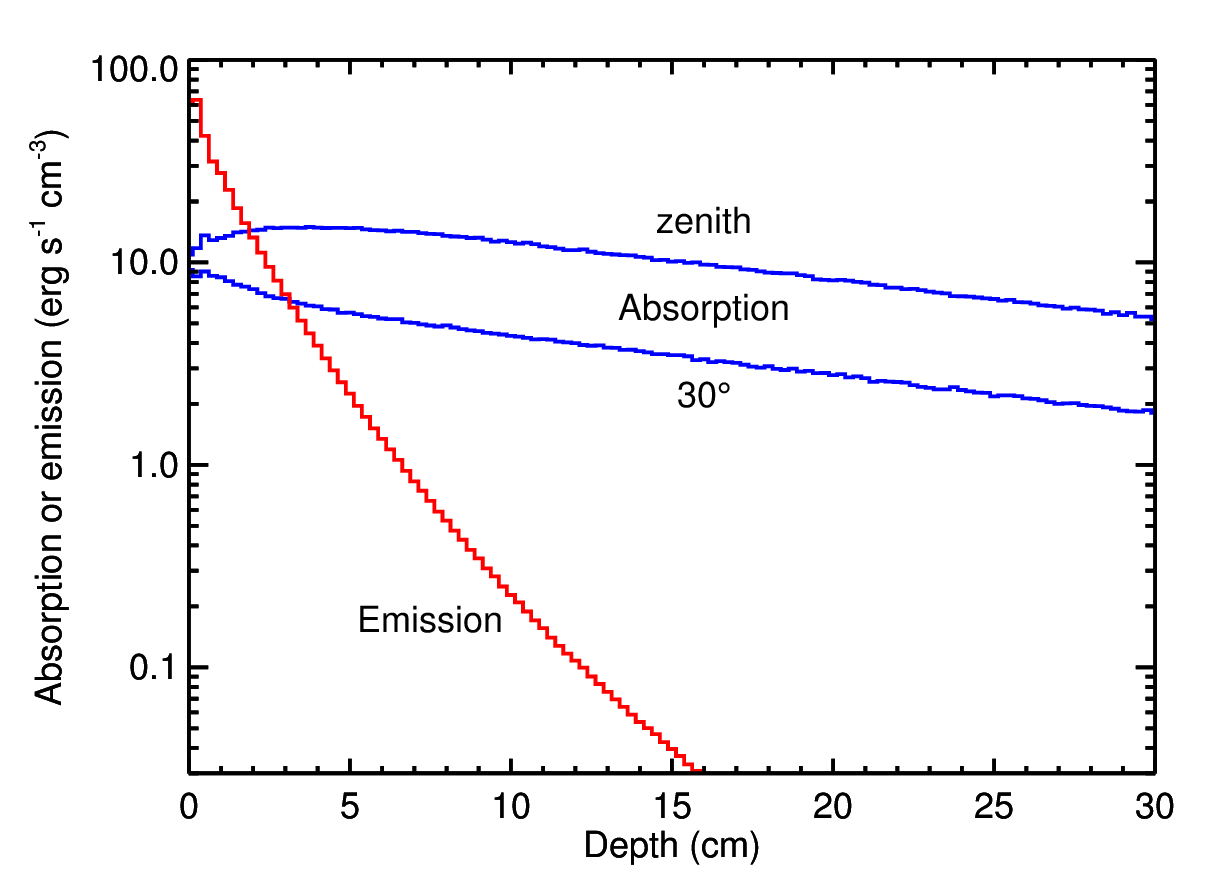
Solar Gardening and the Seasonal Evolution of Nitrogen Ice on Triton and Pluto
Published in 2000: Icarus 148, 340-346.
W.M. Grundy(1) and J.A. Stansberry(2)
(1) Lowell Observatory, Flagstaff Arizona.
(2) Steward Observatory, Tucson Arizona.
Abstract
Nitrogen ice, probably the dominant high albedo surface material on Pluto and Triton, has optical constants that are more strongly absorbing in the thermal infrared than at visible wavelengths. This optical behavior results in absorption of sunlight, on average, at greater depths than the depths from which thermal emission emerges, producing a vertical imbalance between heating and cooling of a sunlit nitrogen ice surface. Assuming the ice is sufficiently permeable to gas flow that the bulk ice is in vapor pressure equilibrium with the nitrogen atmosphere, this vertical distribution of heating and cooling drives net sublimation at depth and condensation closer to the surface. Over time scales much shorter than seasonal time scales on Triton and Pluto, this process of solar gardening will tend to produce a characteristic textural and compositional distribution which has important photometric, spectroscopic, and seasonal consequences. Solar gardening may help explain several previously puzzling observations including the anomalously strong spectral absorption by methane ice in spectra of Triton and Pluto in the 0.7-1.1 micron range and the surprising persistence of Triton's south polar cap at low latitudes during southern summer.

Fig. 1. Energy absorption per unit volume as a function of depth for illumination from the zenith and from an elevation of 30°, at a heliocentric distance of 30 AU (blue curves). Also shown is the bolometric energy emission per unit volume as a function of depth for 37.5 K N2 ice (red curve). Note that emission exceeds absorption near the surface, even for vertically incident sunlight, which, at 30 AU, results in considerably more overall energy absorption than can be radiated by N2 ice at 37.5 K. The near-surface structure in the absorption curves results from the porosity and strong forward scattering, which allow rays to penetrate some distance before they forget their original propagation directions and disperse randomly. This initial penetration reaches greater depths for normally incident rays than for oblique rays.